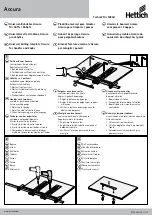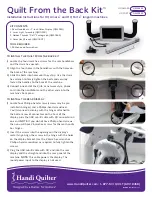
11
Design and Function
2.2 Function
The air in the incubator is heated up by an all-round heater with a large surface ( Fig. 3 , No. 1).
The CO
2
and/or N
2
gas is introduced into the working chamber via a sterile filter. Because CO
2
has a much higher specific weight than air, the gas is let into the working chamber above the
interior fan (2). The turbulence-free interior ventilation (3) ensures a uniform distribution of
the gases, creating a homogenous atmosphere.
In the basic version, humidification takes place by means of water trays (4). To avoid uncon-
trolled condensation, dosed fresh air is piped into the interior. If the appliance is equipped
with a humidity module, humidification takes place via a hot-air generator, which allows
water to evaporate at a set rate. The sterile hot air is let into the interior above the fan and is
mixed with the air current (5).
1
1
1
1
1
1
4
4
2
5
3
1
Fig. 3
How INCO incubators work
2.3 Optional extras
2.3.1 Basic equipment
Ź
Electronic fuzzy-supported PID process controller with pulse width modulation and per-
manent performance adjustments and time-saving self-diagnosis system to quickly locate
errors (see page 39)
Ź
All-round heater with larger surface area, with additional thermal conduction layer (see
Fig. 3 )
Ź
Capacitive humidity sensor
Ź
Humidity control (fresh air via sterile filter) ensures that setpoint humidity is quickly
reached and guarantees short recovery times, while avoiding condensation formation
Ź
Homogenous atmosphere and temperature distribution through encapsulated, turbu-
lence-free ventilation system
Ź
STERICard for fully automatic sterilisation process control for hot air sterilisation of appli-
ance, including sensors and fan rotor (see page 49 )












































